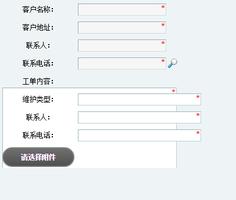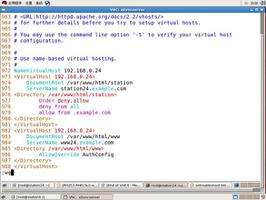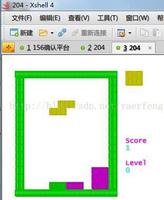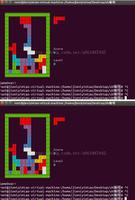PHP输入流php://input实例讲解
对于php://input介绍,PHP官方手册文档有一段话对它进行了很明确地概述。
“php://input allows you to read raw POST data. It is a less memory intensive alternative to$HTTP_RAW_POST_DATA and does not need any special php.ini directives. php://input is not available with enctype=”multipart/form-data”.
翻译过来,是这样:
“php://input可以读取没有处理过的POST数据。相较于$HTTP_RAW_POST_DATA而言,它给内存带来的压力较小,并且不需要特 殊的php.ini设置。php://input不能用于enctype=multipart/form-data”
总结如下:
- 1)、Coentent-Type仅在取值为application/x-www-data-urlencoded和multipart/form-data两种情况下,PHP才会将http请求数据包中相应的数据填入全局变量$_POST
- 2)、PHP不能识别的Content-Type类型的时候,会将http请求包中相应的数据填入变量$HTTP_RAW_POST_DATA
- 3)、只有Coentent-Type为multipart/form-data的时候,PHP不会将http请求数据包中的相应数据填入php://input,否则其它情况都会。填入的长度,由Coentent-Length指定。
- 4)、只有Content-Type为application/x-www-data-urlencoded时,php://input数据才跟$_POST数据相一致。
- 5)、php://input数据总是跟$HTTP_RAW_POST_DATA相同,但是php://input比$HTTP_RAW_POST_DATA更凑效,且不需要特殊设置php.ini
- 6)、PHP会将PATH字段的query_path部分,填入全局变量$_GET。通常情况下,GET方法提交的http请求,body为空。
总结起来就是,在用$_POST获取不到由APP或者一些接口的回调数据时,就用php://input试试
1、 接受xml数据
//发送xml数据
$xml = '<xml>xmldata</xml>';//要发送的xml
$url = 'http://localhost/test/getXML.php';//接收XML地址
$header = 'Content-type: text/xml';//定义content-type为xml
$ch = curl_init(); //初始化curl
curl_setopt($ch, CURLOPT_URL, $url);//设置链接
curl_setopt($ch, CURLOPT_RETURNTRANSFER, 1);//设置是否返回信息
curl_setopt($ch, CURLOPT_HTTPHEADER, $header);//设置HTTP头
curl_setopt($ch, CURLOPT_POST, 1);//设置为POST方式
curl_setopt($ch, CURLOPT_POSTFIELDS, $xml);//POST数据
$response = curl_exec($ch);//接收返回信息
if(curl_errno($ch)){//出错则显示错误信息
print curl_error($ch);
}
curl_close($ch); //关闭curl链接
echo $response;//显示返回信息
// php用file_get_contents("php://input")或者$HTTP_RAW_POST_DATA可以接收xml数据
$xmldata = file_get_contents("php://input");
$data = (array)simplexml_load_string($xmldata);
2、手机上传图片到服务器的小程序
发送
//@file phpinput_post.php
$data=file_get_contents('btn.png');
$http_entity_body = $data;
$http_entity_type = 'application/x-www-form-urlencoded';
$http_entity_length = strlen($http_entity_body);
$host = '127.0.0.1';
$port = 80;
$path = '/image.php';
$fp = fsockopen($host, $port, $error_no, $error_desc, 30);
if ($fp){
fputs($fp, "POST {$path} HTTP/1.1\r\n");
fputs($fp, "Host: {$host}\r\n");
fputs($fp, "Content-Type: {$http_entity_type}\r\n");
fputs($fp, "Content-Length: {$http_entity_length}\r\n");
fputs($fp, "Connection: close\r\n\r\n");
fputs($fp, $http_entity_body . "\r\n\r\n");
while (!feof($fp)) {
$d .= fgets($fp, 4096);
}
fclose($fp);
echo $d;
}
接收
/**
*Recieve image data
**/
error_reporting(E_ALL);
function get_contents() {
$xmlstr= file_get_contents("php://input");
$filename=file_put_contentsxmltime().'.png';
if(($filename,$str)){
echo 'success';
}else{
echo 'failed';
}
}
get_contents();
3:获取HTTP请求原文
/**
* 获取HTTP请求原文
* @return string
*/
function get_http_raw(){
$raw = '';
// (1) 请求行
$raw .= $_SERVER['REQUEST_METHOD'] . ' ' . $_SERVER['REQUEST_URI'] . ' ' . $_SERVER['SERVER_PROTOCOL'] . "\r\n";
// (2) 请求Headers
foreach ($_SERVER as $key => $value) {
if (substr($key , 0 , 5) === 'HTTP_') {
$key = substr($key , 5);
$key = str_replace('_' , '-' , $key);
$raw .= $key . ': ' . $value . "\r\n";
}
}
// (3) 空行
$raw .= "\r\n";
// (4) 请求Body
$raw .= file_get_contents('php://input');
return $raw;
}
以上是 PHP输入流php://input实例讲解 的全部内容, 来源链接: utcz.com/z/334180.html









